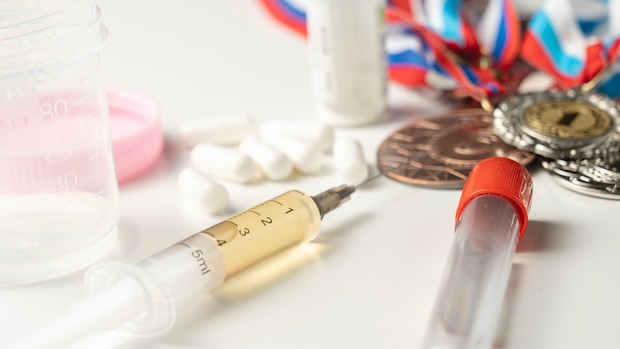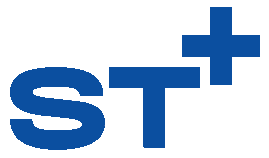The Process of Anti-Doping Protocols

Tomas Rodriguez Hernandez’s ongoing doping saga has ignited discussion amongst athletes — from age-groupers to professionals alike — about penalties, prior bad acts by athletes, and the merits of Rodriguez Hernandez’s public statement, where he blamed his positive test for clomifene on food contamination. Rodriguez Hernandez has opted for a hearing the adverse analytical finding (and subsequent potential ban from sport), which now heads to the International Hearing Panel.
We’re going to do a bit of a deep dive on the procedural elements of triathlon anti-doping cases, from testing through appeal — as it is, unsurprisingly, not a straightforward process.
Anti-Doping: Who is in Charge?
At the very top of the food chain is the World Anti Doping Agency, otherwise known as WADA. It is WADA that develops the overarching anti-doping Code that all athletes — from age groupers to professionals — adhere to when competing in sanctioned triathlon events. WADA also has developed International Standards regarding anti-doping violations, testing, and their subsequent penalties. The advantage that sports and countries have when adopting this framework is that it is generally held with high regard by the Court of Arbitration for Sport (CAS).
Underneath WADA sits a patchwork of national governing bodies and their respective anti-doping authorities, as well as certain private organizations that act as pseudo-governing bodies. For example, in the United States, there sits the U.S. Anti-Doping Agency (USADA), which is the official anti-doping organization for all sport that falls under the United States Olympic & Paralympic Committee (USOPC). Famously, it was USADA’s investigation that led to the Reasoned Decision against Lance Armstrong and his lifetime ban from sanctioned sport.
IRONMAN was the first private company to become a WADA signatory (a remnant of the past feuding with the former International Triathlon Union), and began its own anti-doping program. In 2021, IRONMAN partnered with the International Testing Agency, who administers IRONMAN’s anti-doping program. The ITA also partners with organizations like World Triathlon and the UCI for their respective programs.
Anti-Doping Controls: From Collection to Testing
Let’s get into the most straightforward of the procedure — the collection and testing of athlete samples. Tests are either performed in-competition or out-of-competition. In-competition tests are defined as being taken sometime between 11:59 PM on the day before a competition and lasting through the end of competition and the taking of samples. Rodriguez Hernandez, for example, was tested in competition at IRONMAN Texas; although it has not been said when he was tested, it would most likely have occurred shortly after crossing the finish line.
Out-of-competition tests, meanwhile, occur at any other point in time. Athletes must make themselves available for these tests, which is why you hear so much about athlete whereabouts. Athletes subject to out-of-competition tests must log their whereabouts so that testers might be available to find them in a specific location and test. A failure to be where you say you should be is a strike against you; three whereabouts failures are considered an anti-doping violation and come with a subsequent ban from sport lasting up to two years.
There’s three main markers that are tested these days. Two are pretty simple to explain; there’s urine samples and blood samples. Think of these tests as pass/fail — they are one-time captures of levels. There is then what is dubbed the “blood passport.” The passport reviews levels over time; significant changes in levels in short periods of time might raise suspicions. For a much deeper dive on the science of tests, you can read Jordan Rapp’s piece on the subject.
Now the Results
Samples collected are split into an “A” and a “B” sample. Initial testing is performed on the “A” sample. If that comes back clean, then we’re done (for the time being; technically, samples can be held for up to ten years for future testing). If that sample comes back as an adverse analytical finding (the term of art for “positive for something prohibited by the Code”), however, that’s where we start getting into the weeds.
The first step is for the organization to review whether or not an athlete has a therapeutic use exemption (TUE) for the flagged item. If there is a TUE, then the agency needs to then ensure that the use was via the approved method and in appropriate quantities to follow the letter of the TUE. If not, then the athlete is notified of the adverse analytical finding, the potential penalty for the AAF, and may then request to have the B sample tested. The athlete may, at this point, choose to accept the results of the A sample test and the sanction. But, most often, they will request the B test to be performed. At that B testing, the athlete is permitted to have a representative at that test to ensure that the sample has not been tampered with.
If the B sample is positive, the WADA International Standards (and subsequently, IRONMAN’s rules which are adopted from them) require an immediate provisional suspension, and only then are the charges of an anti-doping violation made. This suspension can only be lifted if a hearing panel determines it is likely that the violation involved a contaminated product, or if the violation involves a substance of abuse (e.g., an in-competition test that comes back positive for alcohol or recreational drugs).
Hearings, Appeals, Decisions and Consequences
Unless an athlete immediately accepts the results of the B sample and appropriate sanction, we now progress to the hearing phase. This is what Rodriguez Hernandez has requested, and is allowed, under the IRONMAN rules. As mentioned, IRONMAN outsources the program to the International Testing Agency, who will argue the case before the International Hearing Panel.
Think of this aspect of things as a lot like a criminal trial in the United States. Each party is responsible for paying for their own lawyers, experts, and fees. The fee itself for the hearing, by rule, must be “affordable” and may not be set to such a level that it would prevent an athlete from asking for a hearing. But, expert testimony is not cheap. A standard starting place for an expert witness is approximately $3,000, with some experts able to charge hourly rates approaching $500.
It is the responsibility of the authority charging the athlete with an anti-doping violation to prove the elements of the ADV; namely, that all procedures of the testing process were appropriately followed, and that there was, in fact, a positive for an item on the Prohibited List. The burden then shifts to the athlete to prove mitigating factors. There are specific provisions in the WADA Code that reduce the length of sanctions for positive tests as a result of tampering, or through no fault or negligence of the athlete. In triathlon, there have been multiple cases around tainted supplements, including the infamous Hammer Nutrition case.
The hearing panel ultimately comes to a decision, typically within 60 days of the conclusion of the hearing. The decision will include details about the charges, the arguments that were made, and ultimately draws a conclusion, like any other arbitration panel might do. They then also make a determination as to the ultimate sanction in the case. If, for instance, all elements of the anti-doping violation were proven and the athlete’s arguments on mitigating factors are unsatisfactory, the panel will conclude that the full sanction should take place. For most first cases in triathlon, the sanction length is four years.
If, however, the hearing panel concludes that there is a case of a contaminated supplement, or that there is some degree of no fault or negligence, the panel may reduce the length of a sanction. By IRONMAN’s own rules, that sanction may be merely a public reprimand, or it can be a sanction as long as three years, or anything in between. For any suspension from sport, time served under the provisional suspension is counted for calculating the end of suspension.
A panel decision may then be appealed to the Court of Arbitration for Sport; however, it’s rare for doping cases to rise to that level.
What’s Interesting About This Case
The most intriguing element of this particular case is that the International Testing Agency has taken the step of announcing the adverse analytical finding prior to the hearing date. IRONMAN has traditionally not done this, despite their being a provision in their rules permitting the release of this information (at their discretion). This indicates, to me, that the ITA is seeking to control more of the narrative surrounding the case, particularly in the wake of Sam Laidlow announcing that he was under investigation last fall and the ITA not making comments on that case.
There is also Rodriguez Hernandez’s defense of egg contamination. Clomifene has been shown to increase egg production in laying hens, particularly when given early in the hen’s life prior to actually laying. (It reduced egg production from older hens). And clomifene does, in fact, pass from hen to egg, and in turn, to athletes who ingest those eggs. But this also shows as a different metabolite mix than, say, athletes who actually ingest clomifene directly. Clomifene use in poultry is also banned in the United States, where Rodriguez Hernandez tested positive.
The only thing certain is that this is far from the last we will hear about this particular case.




Start the discussion at forum.slowtwitch.com